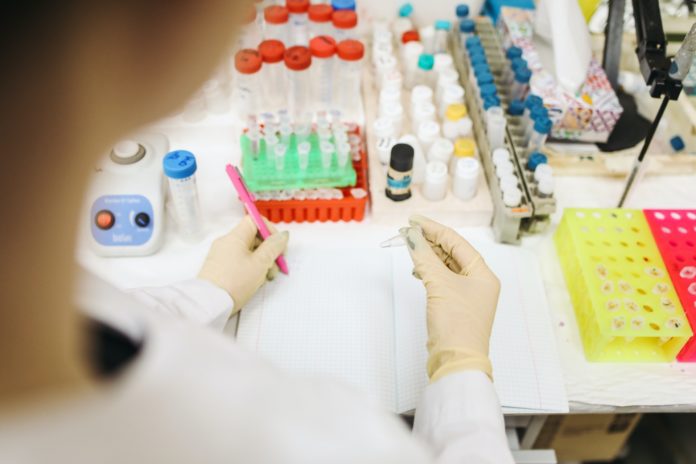
On 29 June, the total confirmed cases of Covid-19 globally, reached 10,176,357, with over 502,861 deaths and 5,510,586 recoveries. The daily number of increased confirmed cases is a matter of concern worldwide. Scientists and researchers are doing their best to invent new drugs and to try the efficacy of existing drugs to halt the deadly disease. According to reports, over 2,200 clinical trials are underway to find a vaccine or a coronavirus therapy. It is still unclear how long the quest will take, but let’s discuss how trials and compliance work.
The journey of a drug from lab to patients
Every year, a couple of dozen new drugs are licensed for manufacture and use, but thousands of candidate drugs fall by the wayside before reaching the final destination. The standard of any new product is measured based on its safety and efficacy to cure existing or emerging diseases. Moreover, these drugs can’t be administered directly to patients without testing because they may harm their bodies immediately or in the longterm. Some may cause mild side effects, while a few could be life-threatening. Hence, every drug has to undergo ‘clinical trials’ to ensure it is safe for use.
Clinical trials
Clinical trials are research studies performed on a set of people aimed at evaluating a medical, surgical, or behavioral intervention. They are the primary way to determine if a new treatment is more effective, safe, or has less harmful or fewer side-effects than standard therapies.
Researchers search for a molecule or compound to act on a target in the human body. Once a therapy is developed, the next stage is to confirm that it has the desired effect on the target and is safe. Before any molecules are given to humans, safety and efficacy tests are conducted using computerized models, cells, and animals. Around half of the therapeutic candidates make it through this pre-clinical testing stage, and some are then ready for testing in humans for the first time.
Clinical trials protocols
To proceed with clinical trials, a drug manufacturer or research organization must get approval for the clinical trial application from the concerned regulatory authority. The application is reviewed by medical and scientific experts, who decide whether or not sufficient preliminary research warrants testing in humans to go ahead.
In India, the Drugs Controller General of India (DCGI), an official of the CDSCO, is the final regulatory authority for approving clinical trials. His or her ambit extends to inspections of clinical trial sites, sponsors of clinical research, and manufacturing facilities.
Although clinical trials in developing countries present a unique set of ethical issues, the protocol remains almost the same worldwide. For example, before the US Food and Drug Administration approves a go-ahead for the clinical trial, scientists perform lab-based studies on animals to test a potential drug or therapy’s safety and efficacy. If these studies display favorable results, the FDA approves the intervention to be tested in humans.
In India, clinical trials are conducted for new drugs, old drugs, phytopharmaceuticals (herbal medicines), and academic clinical studies. New drug and phytopharmaceutical clinical trial applications need approval from the CDSCO, whereas old medications and academic clinical studies only require permission from the Ethics Committee (EC) to proceed.
Four phases of clinical trials
Clinical trials progress through four phases to test a drug or therapy aimed at finding the appropriate dosage and look for side effects. In India, the following four steps of clinical trials are performed.
Phase I or clinical pharmacology trials –– tests an experimental treatment on a small group of often healthy people (a minimum of 2) under a doctor’s close supervision. The purpose is to determine its safety, side effects, and the correct drug dosage.
Phase II or exploratory trials – In this, the medicine is administered to approximately 10 to 12 patients in three to four centers. While the emphasis in clinical phase I is on safety, Phase II emphasizes effectiveness. These trials also continue to study the safety and short-term side effects. This phase may last for several years.
Phase III or confirmatory trials – This phase gathers more information about the drug’s safety and efficacy in a more significant number of patients (1000 to 3000) using the drug in combination with other medications. If this phase gets favorable results, the data is presented to the country’s licensing authorities for a commercial license to market the drug.
Phase IV or post-marketing phase — A Phase IV trial for drugs or devices occurs once the medicine is made available to doctors, who start prescribing it. A device or drug’s efficacy and safety are monitored on diverse populations to help identify any unforeseen side effects.
It is evident from the above that every drug has to go through a standard set of ethical procedures before reaching patients. According to reports, in India alone, about 80% of the rural population uses medicinal herbs or indigenous medicine systems. However, the regulatory mechanism to ensure the quality of these medicines is not precisely defined.
Experts attribute the lack of formal compliance standards to the industry’s fragmentation and the leeway given to traditional cures. There is also perhaps a lack of scrutiny and standardization of raw materials and finished products in herbal medicines and therapies, which are established in common everyday practice and accepted globally.
The recent controversy of Patanjali’s Coronil has made it clear that it is one thing to come up with a concoction to boost immunity, but another to comply with regulatory protocols. For all cures, drugs, and therapies, following the compliance framework is not an option but a necessary condition.








